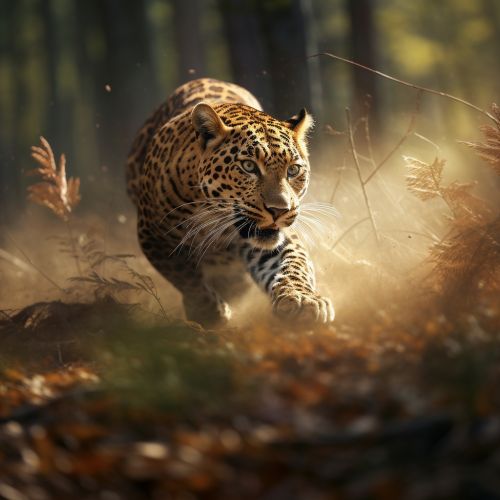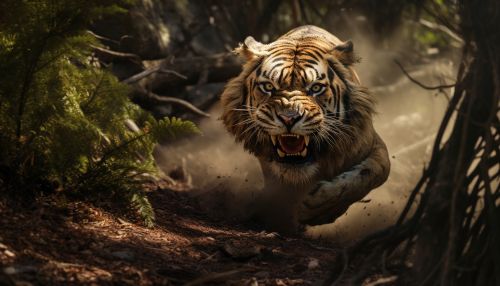Lotka-Volterra equations
Introduction
The Lotka-Volterra equations, also known as the predator-prey equations, are a pair of first-order, non-linear, differential equations frequently used to describe the dynamics of biological systems in which two species interact, one as a predator and the other as prey. The equations were proposed independently by Alfred J. Lotka in 1925 and Vito Volterra in 1926.
Mathematical Formulation
The Lotka-Volterra equations are given by:
\[ \begin{align*} \frac{dx}{dt} & = \alpha x - \beta xy, \\ \frac{dy}{dt} & = \delta xy - \gamma y, \end{align*} \]
where:
- \(x\) is the number of prey (for example, rabbits),
- \(y\) is the number of predators (for example, foxes),
- \(\alpha, \beta, \gamma, \delta\) are positive real parameters describing the interaction of the two species.
Biological Interpretation
The Lotka-Volterra model makes a number of assumptions about the environment and evolution of the predator and prey populations: 1. The prey population finds ample food at all times. 2. The food supply of the predator population depends entirely on the size of the prey population. 3. The rate of change of population is proportional to its size. 4. During the process, the environment does not change in favour of one species and genetic adaptation is inconsequential. 5. Predators have limitless appetite.
As differential equations are used, the solution is deterministic and continuous. This, in turn, implies that the populations change smoothly and do not jump.
Analysis
The Lotka-Volterra model of interspecies interaction is interesting for several reasons. Most notably, the equations predict cyclical oscillations: the number of prey and predators rise and fall in a cycle that repeats itself. This is a direct consequence of the interaction terms in the equations. When the prey population is high, the predator population will increase. When the predator population is high, the prey population will decrease, which will then cause the predator population to decrease, and so on.
These oscillations are an example of a limit cycle in a two-dimensional system. The Lotka-Volterra model is one of the simplest systems that exhibits limit cycle behavior.
Limitations and Extensions
While the Lotka-Volterra model captures the oscillatory nature of predator-prey interactions, it has several limitations. For one, it assumes that the prey population will grow exponentially when there are no predators, an assumption that is not realistic for most species. Additionally, the model assumes that predators will starve to death if there are no prey, ignoring the possibility of predators switching to alternative food sources.
Various extensions of the Lotka-Volterra equations have been proposed to address these limitations. For example, the Holling's type II model includes a term to represent the time it takes for predators to consume prey. The Rosenzweig-MacArthur model includes a carrying capacity for the prey population, representing environmental limits to growth.
See Also


